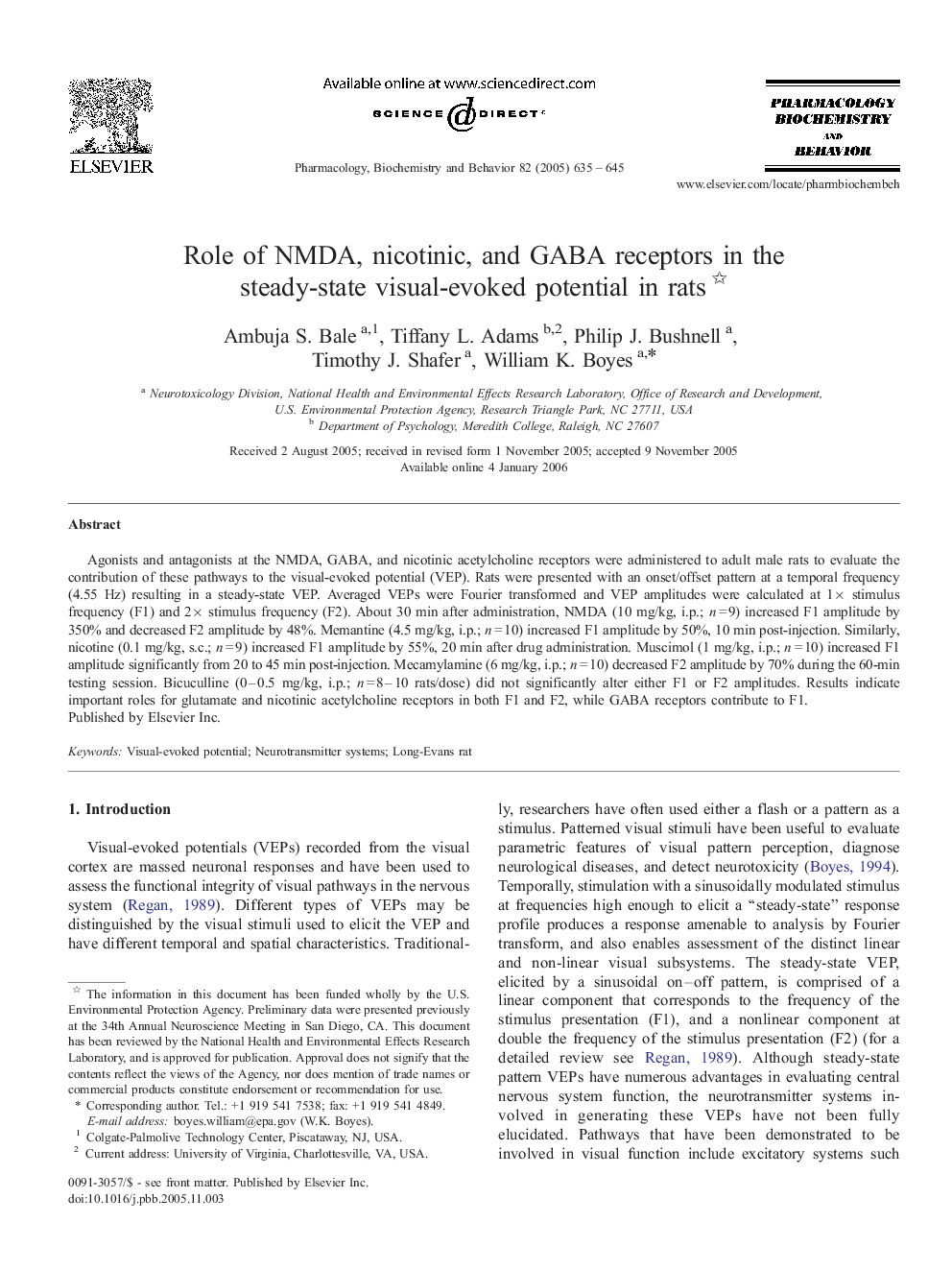| Article ID | Journal | Published Year | Pages | File Type |
|---|---|---|---|---|
| 10838685 | Pharmacology Biochemistry and Behavior | 2005 | 11 Pages |
Abstract
Agonists and antagonists at the NMDA, GABA, and nicotinic acetylcholine receptors were administered to adult male rats to evaluate the contribution of these pathways to the visual-evoked potential (VEP). Rats were presented with an onset/offset pattern at a temporal frequency (4.55 Hz) resulting in a steady-state VEP. Averaged VEPs were Fourier transformed and VEP amplitudes were calculated at 1à stimulus frequency (F1) and 2à stimulus frequency (F2). About 30 min after administration, NMDA (10 mg/kg, i.p.; n = 9) increased F1 amplitude by 350% and decreased F2 amplitude by 48%. Memantine (4.5 mg/kg, i.p.; n = 10) increased F1 amplitude by 50%, 10 min post-injection. Similarly, nicotine (0.1 mg/kg, s.c.; n = 9) increased F1 amplitude by 55%, 20 min after drug administration. Muscimol (1 mg/kg, i.p.; n = 10) increased F1 amplitude significantly from 20 to 45 min post-injection. Mecamylamine (6 mg/kg, i.p.; n = 10) decreased F2 amplitude by 70% during the 60-min testing session. Bicuculline (0-0.5 mg/kg, i.p.; n = 8-10 rats/dose) did not significantly alter either F1 or F2 amplitudes. Results indicate important roles for glutamate and nicotinic acetylcholine receptors in both F1 and F2, while GABA receptors contribute to F1.
Related Topics
Life Sciences
Biochemistry, Genetics and Molecular Biology
Biochemistry
Authors
Ambuja S. Bale, Tiffany L. Adams, Philip J. Bushnell, Timothy J. Shafer, William K. Boyes,
